God Bud (aka Purple God Bud)
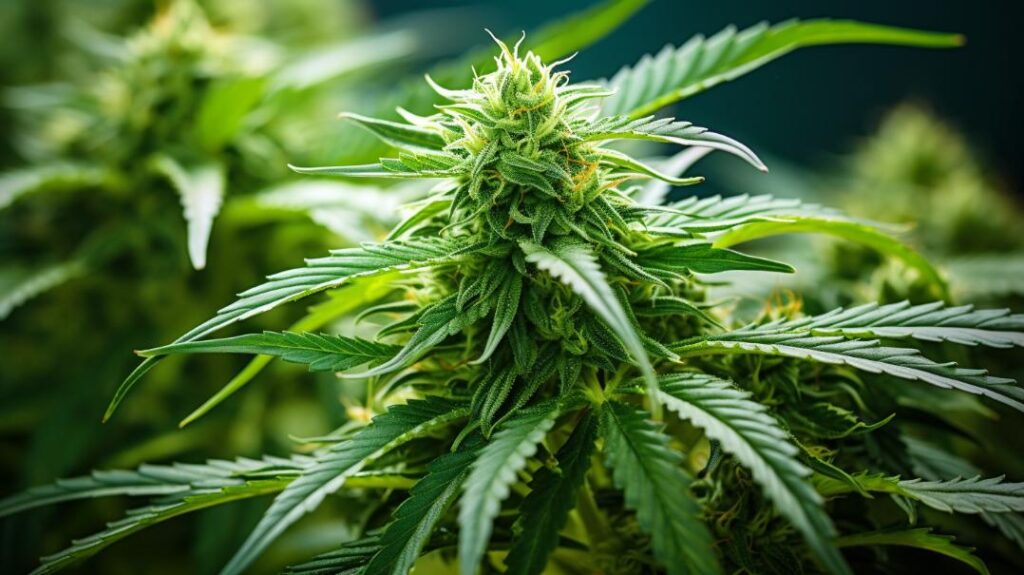
In the ever-expanding world of cannabis cultivation and consumption, the God Strain has emerged as a topic of particular interest due to its unique genetic lineage and the profound effects it imparts on its users.
A hybrid resulting from the crossbreeding of Hawaiian and Purple Skunk, this indica-dominant variety boasts a complex terpene profile that not only confers it with distinctive tropical and berry flavors but also contributes to its therapeutic potential.
While its ability to induce a powerful and sedative high has made it a subject of enthusiasm among aficionados, it is the strain’s purported efficacy in alleviating symptoms of stress, pain, and anxiety that has captured the attention of the medical community.
However, as with all potent strains, consideration must be given to the possible adverse effects and the fine balance that must be struck between benefit and risk.
As we consider the nuances of the God Strain, from its enigmatic origins to its current standing in the pantheon of cannabis strains, one must wonder whether its divine moniker is a mere product of marketing or a true reflection of its otherworldly capabilities.
Genetic Lineage
The genetic lineage of God Bud, an evenly balanced hybrid strain, is anchored in its Hawaiian and Purple Skunk ancestors, which imbue it with distinctive flavor profiles and therapeutic properties. As a cannabis strain, God Bud’s genetic composition plays a crucial role in its phenotypic expression, resulting in a complex bouquet of tropical fruit flavors complemented by nuanced undertones of berry, lavender, and pine. These organoleptic characteristics can be traced back to its lineage, with the Hawaiian genetics contributing to the strain’s sweet, tropical essence and the Purple Skunk adding a depth of earthy and skunky notes.
In terms of its therapeutic potential, God Bud’s 50% Sativa and 50% Indica genetic split facilitates a multifaceted effect profile. The Sativa component is responsible for the strain’s uplifting and euphoric effects, while the Indica heritage contributes to its ability to provide intense pain relief, alleviate stress and anxiety, mitigate symptoms of depression, and promote relaxation. Moreover, the genetic lineage is a determinant of God Bud’s potency, with THC levels that can soar as high as 27%. Such high THC content underpins the strain’s capacity to induce sleepiness, relax muscles, and elicit a state of euphoria, further illustrating the profound influence of its genetic roots.
THC/CBD Content
Delving into the cannabinoid profile of God Bud, we find that its average THC content ranges from 18% to 19%, though some specimens boast levels up to 27%. This relatively high THC concentration is a signature feature of the strain, likely contributing to its potent psychoactive effects. While the exact CBD content of God Bud remains unspecified, it is generally acknowledged to be minimal. Given that the strain is a creation of BC Bud Depot, a reputable seed bank known for its award-winning cannabis genetics, consumers can expect a consistent cannabinoid profile that delivers the effects associated with God Buds.
The psychoactive properties of THC in God Bud are typically manifested as sleepiness, muscle relaxation, and a sense of euphoria. However, these therapeutic effects can also be accompanied by some adverse reactions, such as dizziness, dry mouth, and dry eyes. These side effects are transient and commonly subside without intervention.
God Bud’s THC/CBD content makes it particularly suitable for evening use, where its sedative qualities can aid in appetite stimulation and facilitate relaxation, enhancing the overall experience of calm and well-being.
Terpene Profile
Exploring the terpene profile of God Bud reveals a nuanced symphony of aromatic compounds, including myrcene, caryophyllene, and limonene, each playing a pivotal role in shaping the strain’s distinctive scent and its therapeutic potential. These terpenes contribute to God Bud’s pungent, earthy, and musky aroma, complemented by undercurrents of tropical fruit, berry, and lavender, which are suggestive of the strain’s complex sensory profile.
The terpene myrcene, which is prevalent in God Bud, is known for its sedative and relaxing effects, potentially aiding in stress relief and providing anti-anxiety benefits. Caryophyllene, another prominent terpene in the profile, is associated with anti-inflammatory properties and may contribute to the analgesic effects of the strain. Limonene adds a citrusy note to the bouquet and is thought to elevate mood and provide stress relief. Collectively, these terpenes exemplify the strain’s potential to offer a multifaceted therapeutic experience.
Understanding the terpene profile is crucial for both consumers and professionals seeking to identify the unique characteristics and possible health benefits of God Bud. The interplay of these terpenes within the strain underscores the importance of the entourage effect, where the synergy between diverse cannabis compounds can enhance the overall experience and potency of the product.
In keeping with the privacy of proprietary cultivation techniques, the exact ratios of these terpenes in God Bud’s profile are often guarded, contributing to the mystique of the strain designated as number 9 in some catalogs.
Effects
Building upon the understanding of God Bud’s terpene profile, it is imperative to examine the strain’s effects on users, as they encompass both therapeutic benefits and potential adverse reactions.
Users typically report a profound sense of calm after consuming God Bud, which is often accompanied by drowsiness and an increased appetite. These effects are largely attributable to the strain’s balanced hybrid nature, with a 50/50 split between Sativa and Indica genetics, offering a dualistic experience of euphoria and sedation.
The calming properties of God Bud are frequently utilized to manage stress, pain, and anxiety, highlighting its significance in the realm of therapeutic cannabis. Yet, the God strain’s potency, characterized by higher-than-average THC levels, demands cautious consumption to mitigate the risk of negative side effects.
Such effects include dry mouth and eyes, which are common with cannabis use, but also paranoia, which is a less common but more concerning reaction.
Medical Uses
God Bud’s potential therapeutic applications are notably diverse, with evidence suggesting its efficacy in alleviating conditions such as insomnia, chronic pain, and severe stress. Its high THC content, which can range from 14% to 27%, plays a significant role in its ability to induce sleepiness and provide muscle relaxation, contributing to its use as a sleep aid and pain reliever. Anecdotal patient testimonials often highlight the relief experienced from persistent discomfort and psychological distress. However, due to the psychoactive properties of THC, dosage recommendations should be approached with caution, particularly for individuals new to cannabis use.
|
Condition |
Patient Testimonials |
Dosage Recommendations |
|
Insomnia |
“Induces sleep, highly effective” |
Start with a low dose |
|
Chronic Pain |
“Provides intense pain relief” |
Adjust based on pain severity |
|
Severe Stress |
“Calming, helps manage anxiety” |
Moderate dose for stress relief |
|
Depression |
“Uplifting, eases depressive symptoms” |
Personalized to patient needs |
|
Anxiety |
“Reduces anxiety, promotes relaxation” |
Low to moderate dose |
Potential drug interactions are an imperative aspect to consider when incorporating God Bud into a therapeutic regime. Consulting with a health professional is essential to mitigate any adverse interactions, particularly for patients on other medications.
Flavor and Aroma
While the medicinal benefits of God Bud are well-documented, its sensory profile, characterized by a fusion of tropical fruit flavors with hints of berry, lavender, and pine, plays a significant role in enhancing the therapeutic experience for users. This complex flavor mosaic not only invites a deeper sensory exploration but also suggests potential culinary applications where such a distinctive taste could complement a variety of dishes and beverages.
The aromatic profile of God Bud, with its tropical and earthy smell, contributes to its appeal and may influence the psychophysiological effects on users, reinforcing the connection between olfactory stimulation and therapeutic outcomes. The pungent, spicy/herbal notes intertwined with the soothing scent of lavender create a rich tapestry of aromas that can be both calming and invigorating.
Flavor pairing suggestions for God Bud might include incorporating its essence into herbal teas, which could amplify the relaxing effects, or pairing it with fruit-based desserts where its tropical undertones would resonate. Additionally, savory dishes that utilize pine nuts or rosemary might benefit from the strain’s piney accents, creating a unique gastronomic synergy.
Appearance
The visually striking God Bud strain is renowned for its large, dense buds that exhibit a captivating palette of deep green and purple hues, accented by amber to brown colored pistils, and a generous coating of resinous trichomes. The color variations in the buds are not merely aesthetic but may also indicate the plant’s maturity and the presence of specific phytochemicals, which contribute to its therapeutic properties and potency.
Analytically, the trichome density is a critical factor in evaluating the quality and potential psychoactive strength of the God Bud cannabis strain. The frosty-white appearance of the buds from a distance is a tell-tale sign of the heavy trichome production, offering a visual cue to the strain’s rich cannabinoid and terpene profile. This characteristic is particularly sought after by connoisseurs and patients alike.
In terms of bud structure, the God Bud strain manifests a robust form with short, compact, and thick buds that are emblematic of its indica heritage. The plant’s growth pattern results in branches that are tightly packed, which in turn support the development of its distinctive bud morphology. Such structural traits are indicative of the strain’s genetic lineage and cultivation conditions, which are optimized for maximum flower production.
Grow Information
Cultivators favor the God Bud strain for its adaptability to indoor environments and its performance in cooler climates, where it reaches an average height of approximately three feet. This compact growth habit makes it an ideal candidate for space-constrained indoor grow operations. With its origins in indica genetics, God Bud responds well to a variety of growing techniques including Sea of Green (SOG) setups, which optimize space usage and can potentially accelerate the overall flowering period.
The strain’s dense bud structure requires careful humidity control to prevent mold and mildew, with proper air circulation being paramount. When approaching the flowering stage, which typically spans between 8 to 9 weeks, growers should adjust the light cycle to initiate and support this critical phase. As for nutrient requirements, God Bud demands a balanced feeding regimen that supplies essential macronutrients—nitrogen, phosphorus, and potassium—alongside micronutrients to foster robust growth and potent bud development.
When implementing harvesting methods, timing is crucial to ensure peak THC potency and flavor profile preservation. Trichome observation is a reliable indicator of maturity; clear to milky trichomes suggest the optimal harvesting window. Post-harvest, a meticulous curing process further accentuates the strain’s unique tropical and berry flavors, enhancing its therapeutic properties.
Adverse Effects
Understanding the potential adverse effects of God Bud is essential for consumers, as the strain’s high THC content can lead to dizziness, dry mouth, and dry eyes, among other symptoms. These effects are generally not severe and tend to dissipate relatively quickly. However, individuals may react differently to God Bud due to variations in body chemistry, tolerance, and consumption method.
The sedative quality of God Bud, while sought after by some for its potential to induce sleepiness, can paradoxically result in prolonged wakefulness when consumed late at night or by individuals with insomnia. This underscores the importance of timing and context in the consumption of this strain.
Below is a table outlining common adverse effects and considerations:
|
Adverse Effect |
Consideration |
|
Dizziness |
Typically mild and short-lived |
|
Dry mouth & eyes |
Hydration can help mitigate these symptoms |
|
Drowsiness |
May interfere with tasks requiring alertness |
|
Anxiety |
Can be exacerbated in sensitive individuals |
|
Paranoia |
Awareness and dose control are key to managing this effect |
These adverse reactions, particularly anxiety and paranoia, are often dose-dependent. As a result, it’s advisable to start with a lower dose and gradually increase as needed, especially for those with sensitivity to high-THC cannabis strains.
Comparisons with Similar Strains
When comparing God Bud to other strains with similar genetics, its balanced hybrid nature distinguishes it as a particularly versatile option for both recreational and medicinal users seeking a combination of uplifting and sedative effects.
Here are key comparisons between God Bud and similar strains:
- God Bud vs. OG Kush: While OG Kush is known for its stress-relieving qualities and is a favorite among users seeking a more energetic and euphoric experience, God Bud often provides a more pronounced sense of relaxation and sedation, making it suitable for evening use.
- God Bud vs. Blue Dream: Blue Dream has a reputation for its gentle cerebral invigoration and full-body relaxation. God Bud, however, tends to lean more towards the relaxing end of the spectrum and may induce stronger sedative effects, which can be beneficial for users with severe insomnia.
- God Bud vs. Northern Lights: Both strains offer substantial relaxation and pain relief. Northern Lights is primarily an indica with deep sedation potential, while God Bud maintains a more balanced profile, offering a blend of euphoria and calm that is less likely to lead to immediate sleepiness.
These distinctions underscore the unique position of God Bud within the pantheon of hybrid strains, catering to users who require nuanced therapeutic effects without overwhelmingly favoring either the indica or sativa end of the spectrum.
Research and Studies
Recent investigations into the God Bud strain have illuminated its potential as a multi-faceted therapeutic agent, prompting further scientific scrutiny into its pain-relieving and anxiolytic qualities. The indica-dominant hybrid has shown promise in alleviating symptoms associated with severe depression, stress, and anxiety, while also inducing relaxation. Research findings indicate that the strain’s immediate sedative effects may stem from its unique cannabinoid and terpene profiles, which are currently being analyzed for their specific pharmacological properties.
The potential applications of God Bud in clinical settings are being explored through ongoing clinical trials and observational studies. These studies aim to determine the safety, efficacy, and optimal dosing parameters for treating various medical conditions. The insights gained from such research will be critical in providing evidence-based recommendations for its medicinal use.
Moreover, future directions in research involve a deeper understanding of God Bud’s genetic lineage, breeding techniques, and cultivation characteristics. This knowledge is essential not only to enhance its therapeutic qualities but also to standardize quality and ensure consistent availability. As research continues, a comprehensive evaluation of God Bud’s properties will further establish its role in medical cannabis and shape its integration into future treatment regimes.
History and Origin
Building upon the therapeutic significance of God Bud, it is equally important to examine its historical roots and the journey that led to its development as a prominent strain in the cannabis community. Originating from Canada, God Bud’s inception involved the crossbreeding of Hawaiian with Purple Skunk, showcasing advanced breeding techniques that have contributed significantly to its cultural significance.
The development of God Bud represents a milestone in the evolution and adaptation of cannabis strains to meet specific consumer needs and preferences. As such, its history is marked by several key aspects:
- It originated in Canada, indicating a geographical influence on its characteristics.
- The crossbreeding of Hawaiian with Purple Skunk denotes the implementation of sophisticated breeding techniques.
- God Bud’s unique flavor profile of tropical fruits, berry, lavender, and pine reflects cultural influences and consumer demand.
- The THC content range (14% to 22%) exemplifies the adaptation of cannabis strains for varying levels of potency.
- Its use in treating medical conditions like chronic pain and severe depression highlights the evolution of cannabis as a therapeutic agent.
Analyzing the history and origin of God Bud reveals a dynamic interplay between cultural trends, breeding expertise, and the ongoing adaptation of cannabis strains to serve both recreational and medicinal purposes.
Frequently Asked Questions
Is God Bud a Sativa or Indica?
God Bud is a balanced hybrid strain with equal parts Sativa and Indica genetics. Its cultivation presents unique challenges, yet it is prized for its therapeutic uses in stress and pain relief.
Is God’s Gift a Strong Strain?
God’s Gift is recognized for its divine potency, often sought after for its profound sedative qualities. Despite religious symbolism, its cultivation presents challenges, requiring expertise to maintain its revered status among high-THC strains.
Is Zeus Strain Indica or Sativa?
Zeus is a strain whose genetics suggest a sativa-dominant profile. Advanced cultivation techniques have optimized its strain effects, which typically include cerebral stimulation and energy, aligning with sativa characteristics rather than indica.
What Does God Bud Smell Like?
God Bud’s scent complexity is marked by an intricate terpene profile that offers a therapeutic aroma, blending earthy, pine, and sweet notes with tropical fruit undertones for a nuanced olfactory experience.

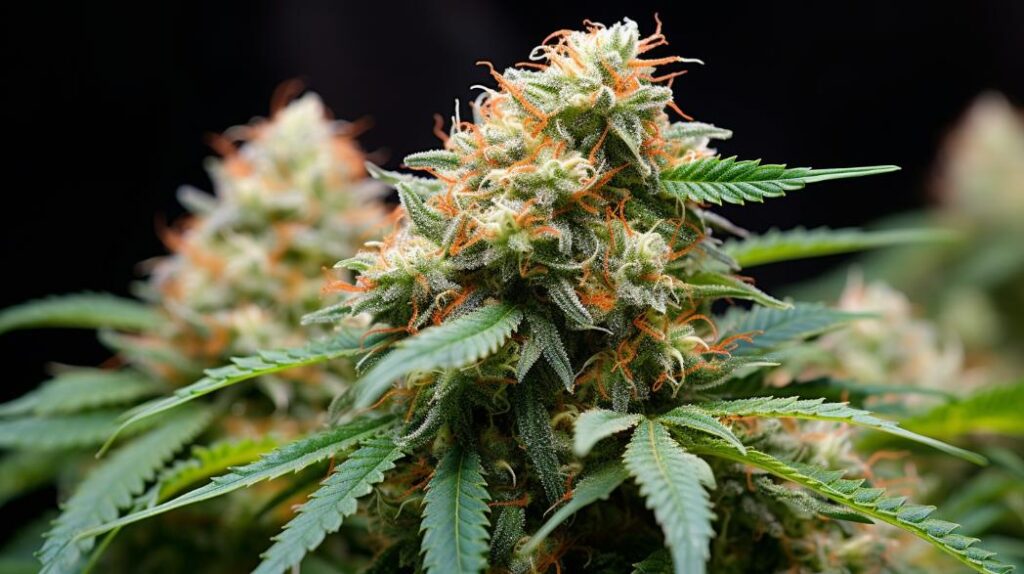
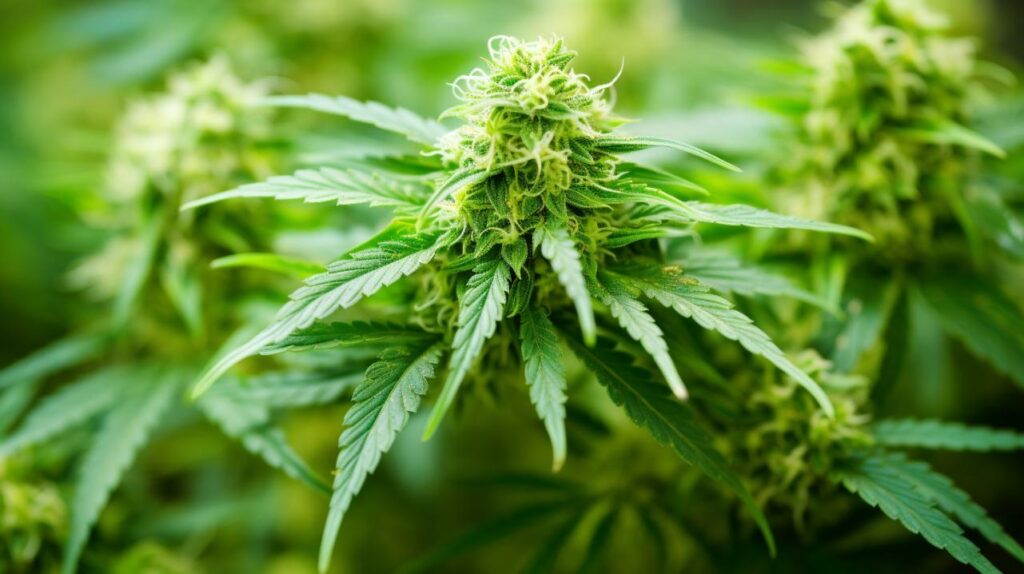
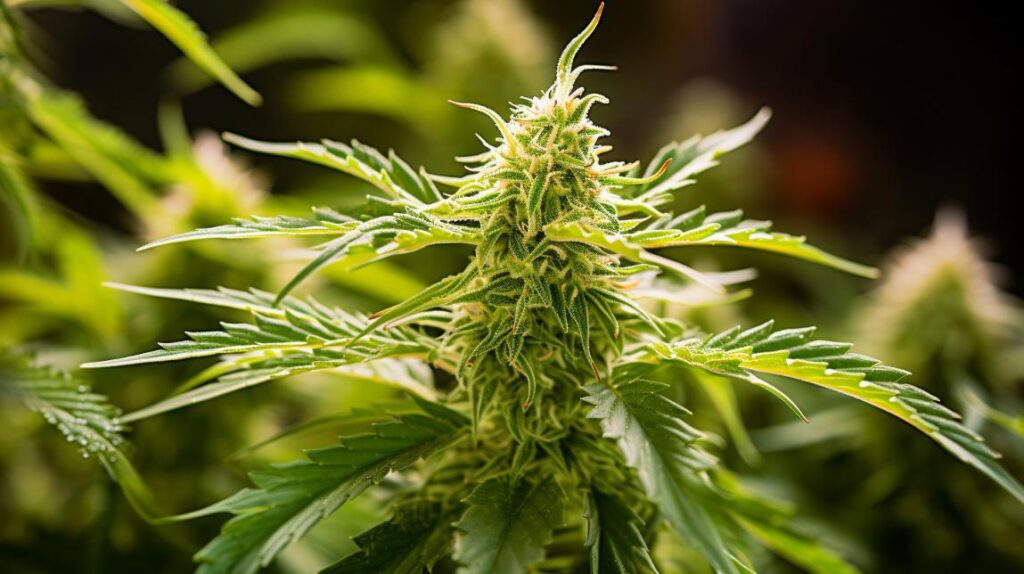
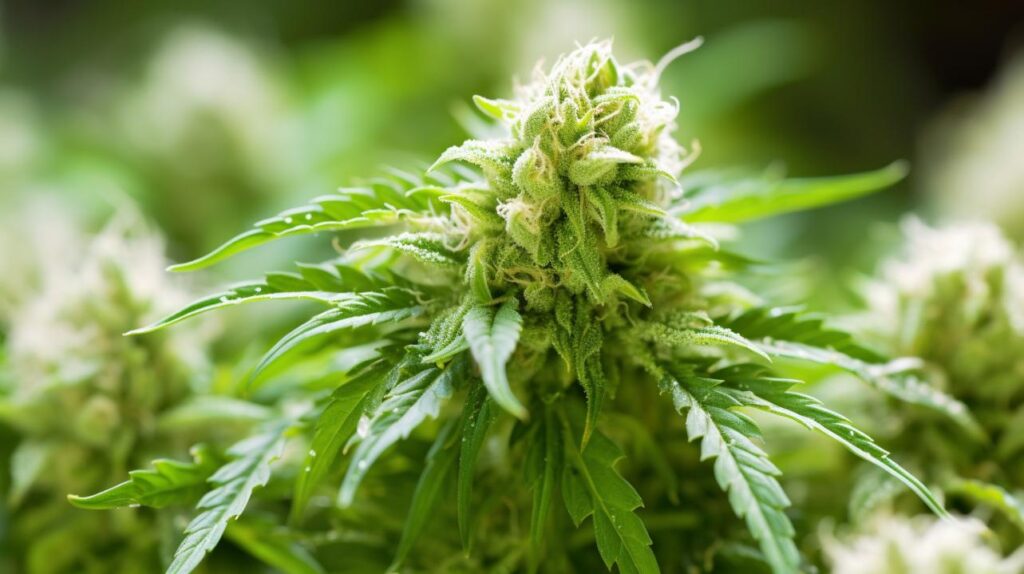
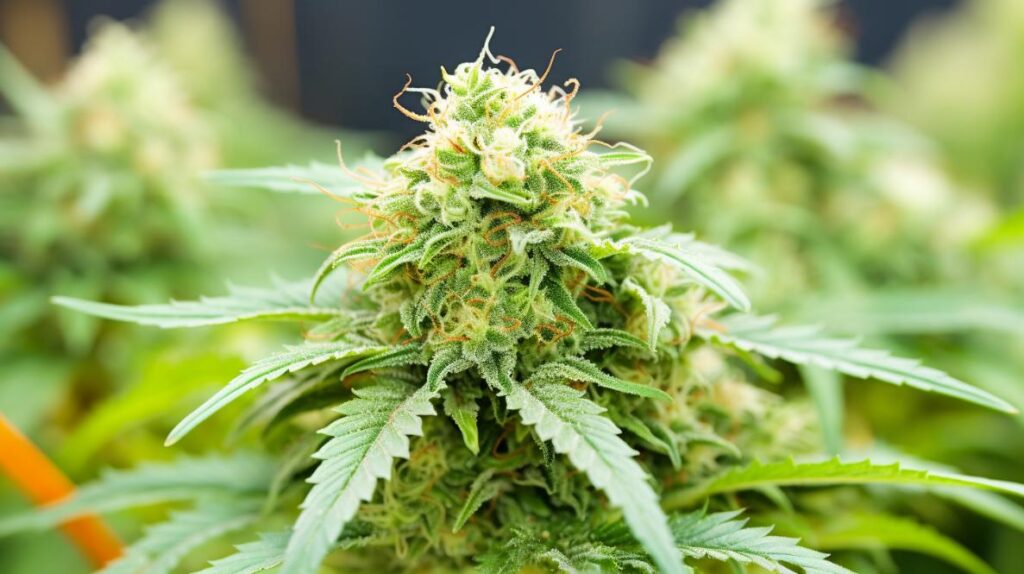

Responses